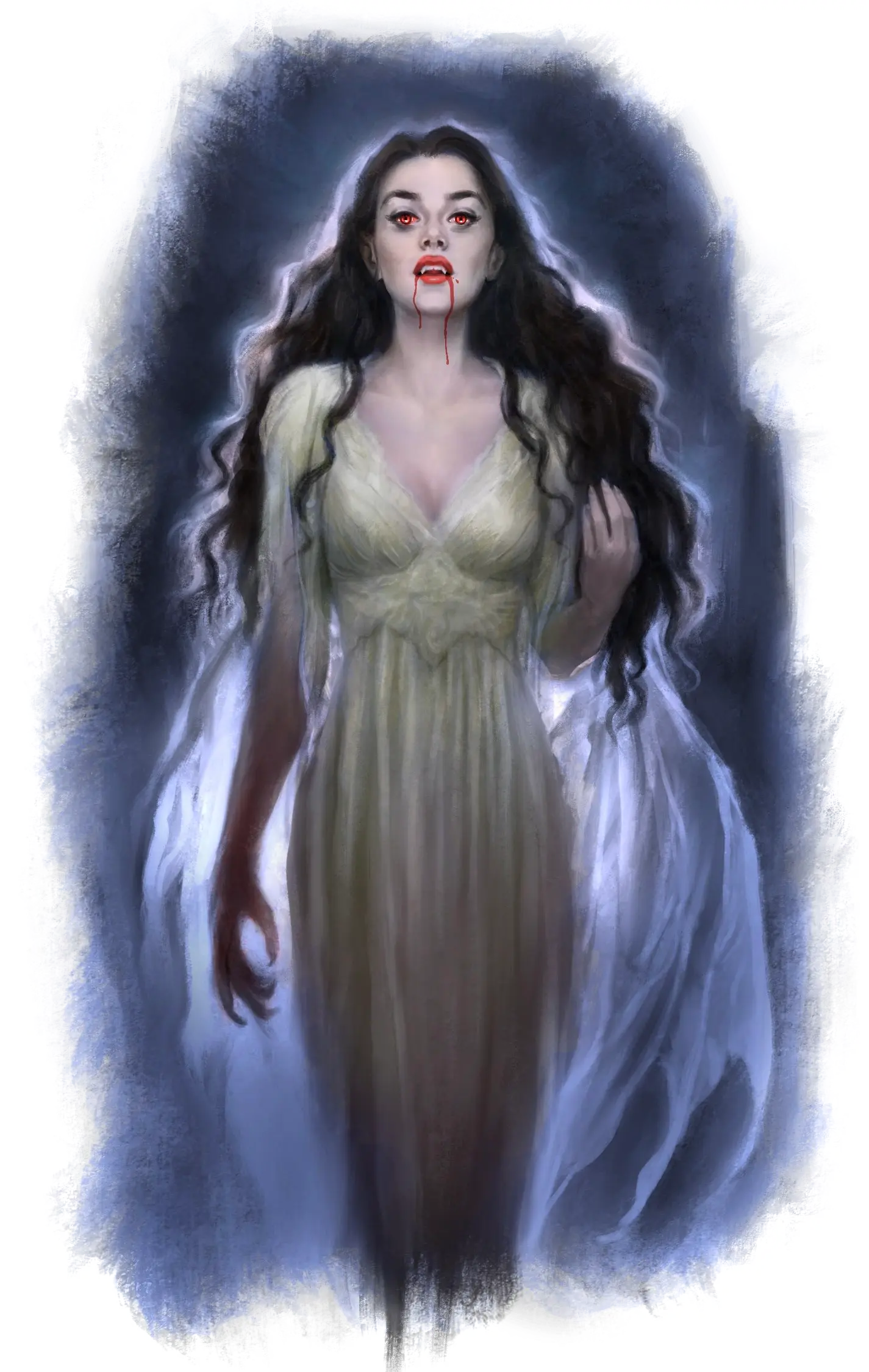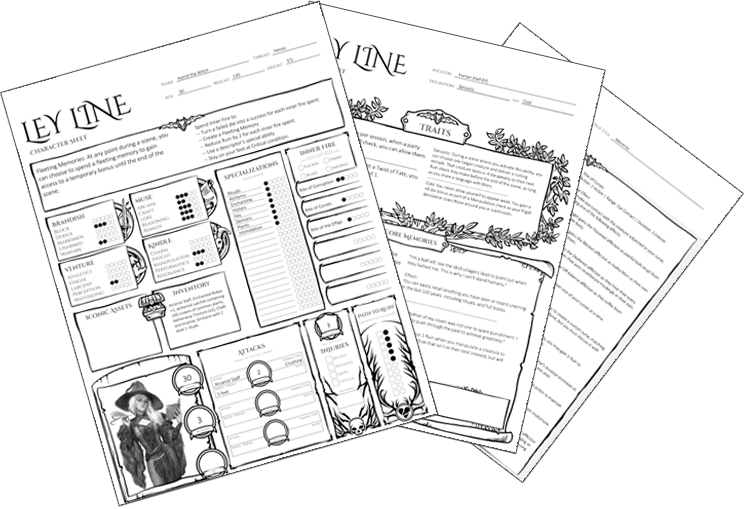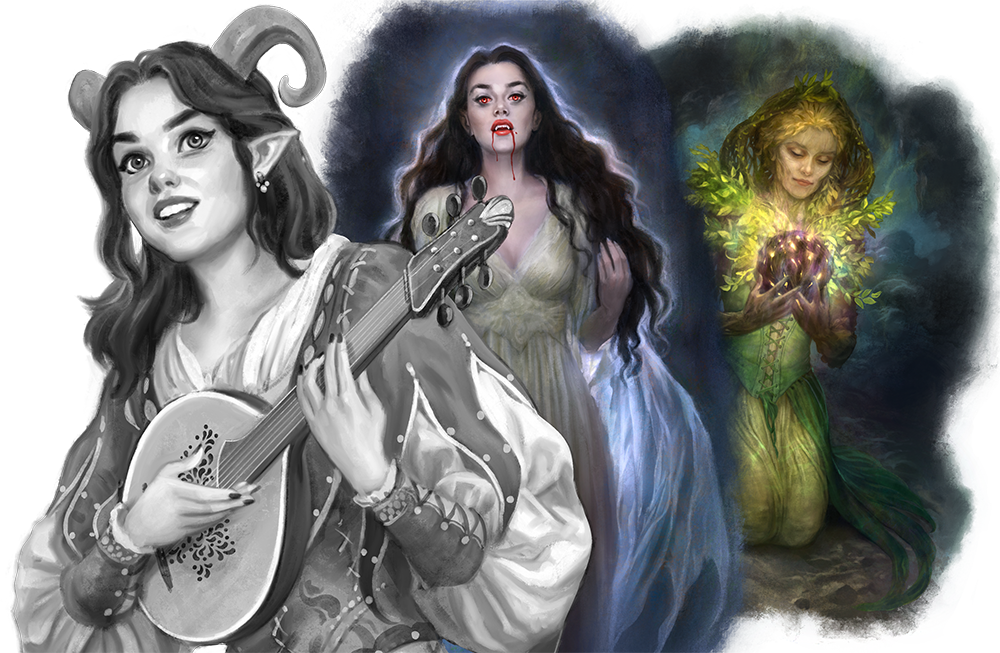Descriptors
Descriptors reflect your overall attitude, outlook, and how you interact with the world. When creating your character’s origin, select two Descriptors. During gameplay, if a Descriptor is relevant to your current situation, you can choose to Ignite that Descriptor, activating a special ability connected to them.
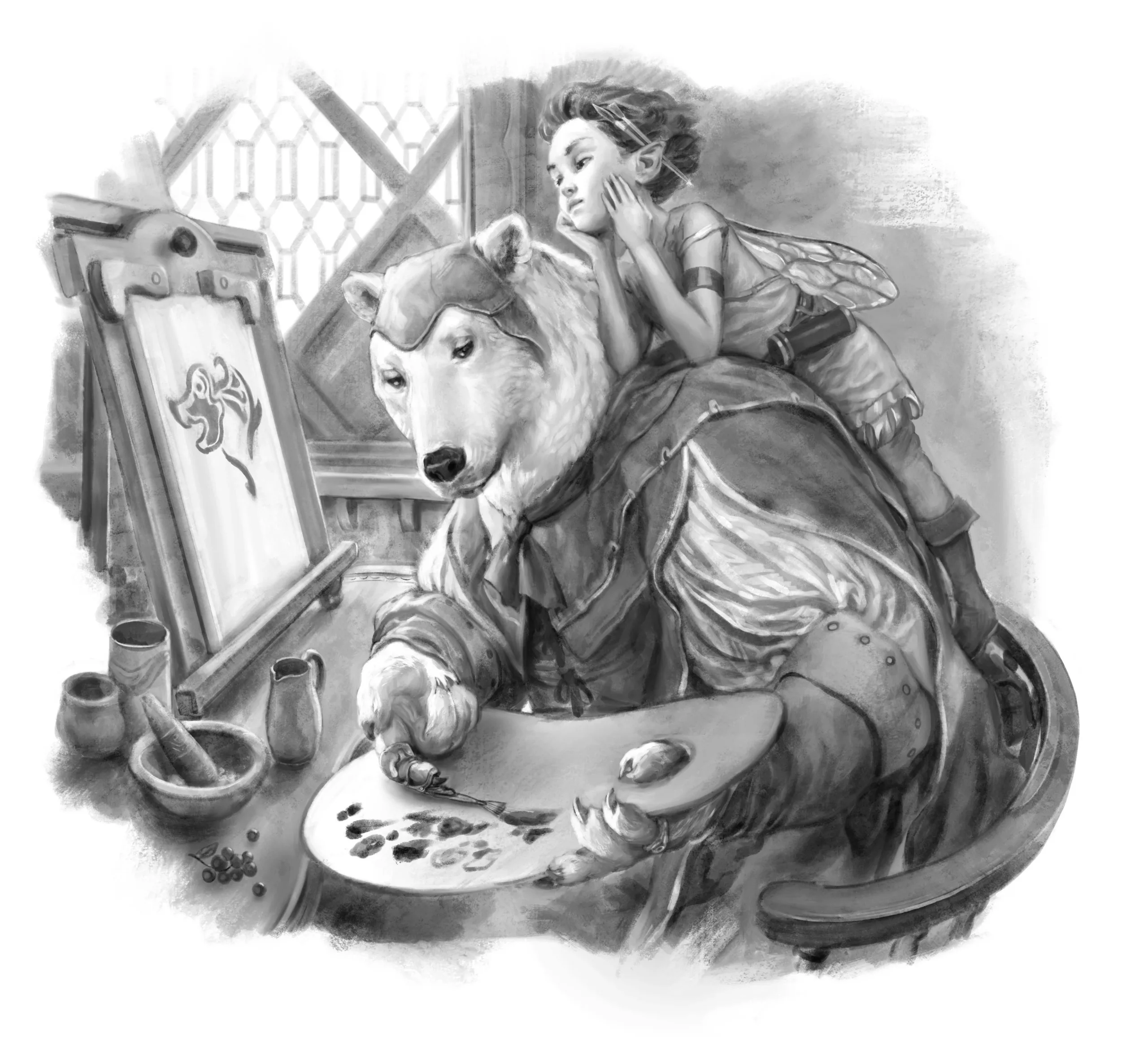
Core and Fleeting Memories
Core memories are character-defining experiences that provide permanent bonuses based on your backstory and adventures. Three memories are chosen at character creation, with more being added as you pass important milestones in your journey.
While Fleeting memories do not have the character-defining weight of core memories, they are treated like a currency. At any point during a scene, you can choose to spend a fleeting memory to gain access to a temporary bonus until the end of the scene. You gain Fleeting memories by spending Inner Fire or as a reward from your Loremaster.
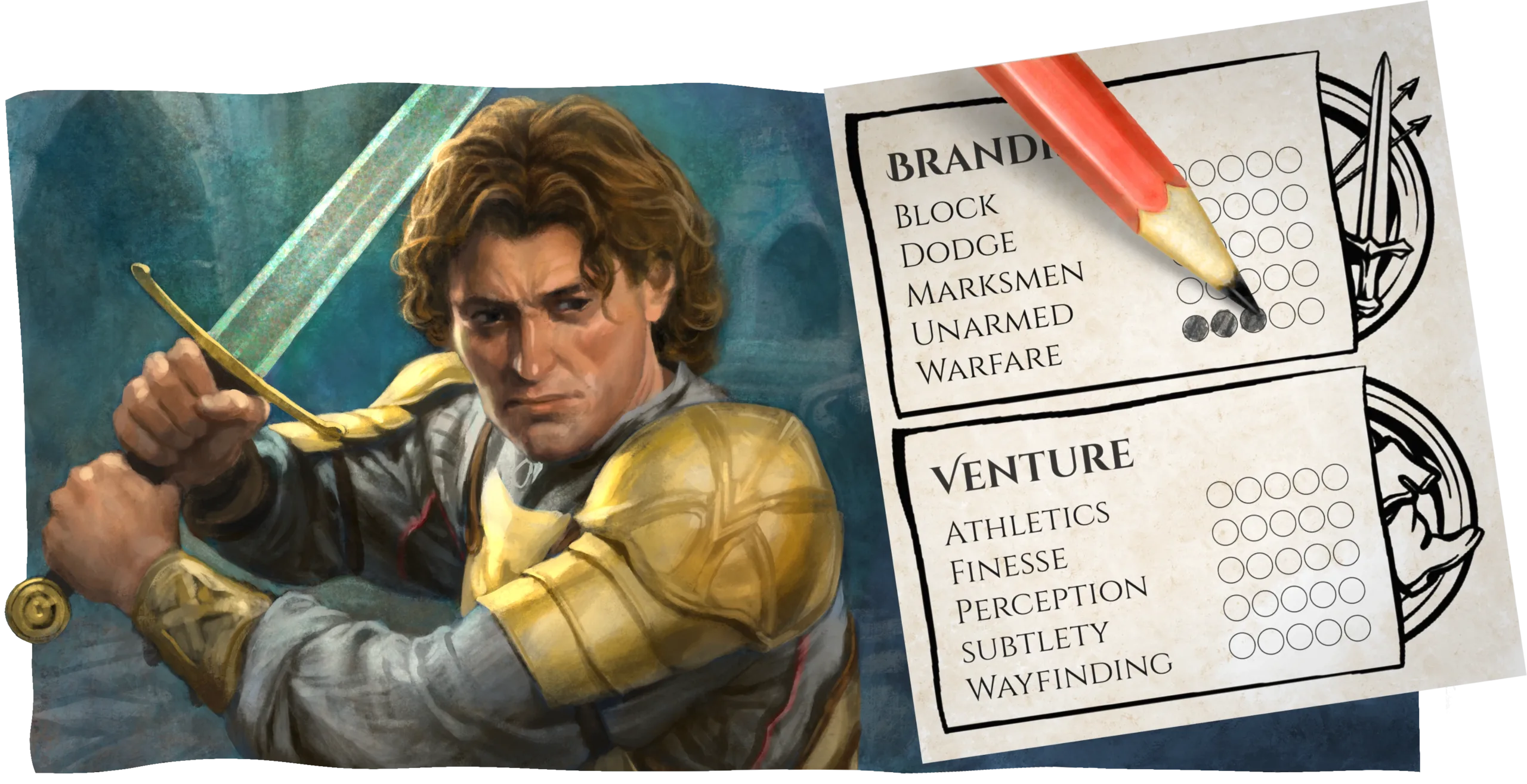
Skills and Specializations
Skills represent your character’s proficiency in a wide range of talents, such as wielding blades, picking locks, or performing magic rituals. For every level you have in a skill, you can roll one die when performing tasks where that skill applies
Being trained in a skill allows you to apply a specialization to your roll. Specializations are areas of focused expertise that may apply to multiple skills, adding additional dice when they do.
For example, the Daggers specialization is applicable when using daggers as part of a Warefare check in melee combat, competing in a knife-throwing contest using the Marksmen skill, or juggling them as part of a Performance check.
Masteries and Ascensions
Masteries set you apart from the common folk by providing unique abilities bothmagical and non-magical in nature. As your Masteries level up, you unlock new ways to enhance your existing abilities through Ascensions. Ascensions allow you to customize your masteries, adding new utility and effects each time you use them. Activating a Mastery comes at a resource cost, and each Ascension increases that cost further.
For example, Astrid the Witch has studied the Rite of Flame. At first, she was only able to produce a handful of flame, but as she leveled the mastery, she was able to apply more Asensions to her spell, changing the effects in ways unique to her. Now, she can summon walls of fire to cut off her enemy’s escape, or produce massive explosions with a glance.
 Ruin
Ruin
Ruin is the gradual decay of your character’s body, mind, and spirit as they face peril and channel powerful abilities—whether from wielding Aether, enduring fear, or pushing beyond your limits. This is the primary source for masteries and your ability to resist conditions like fear and poison. Keeping your Ruin in check is essential for every successful adventurer.
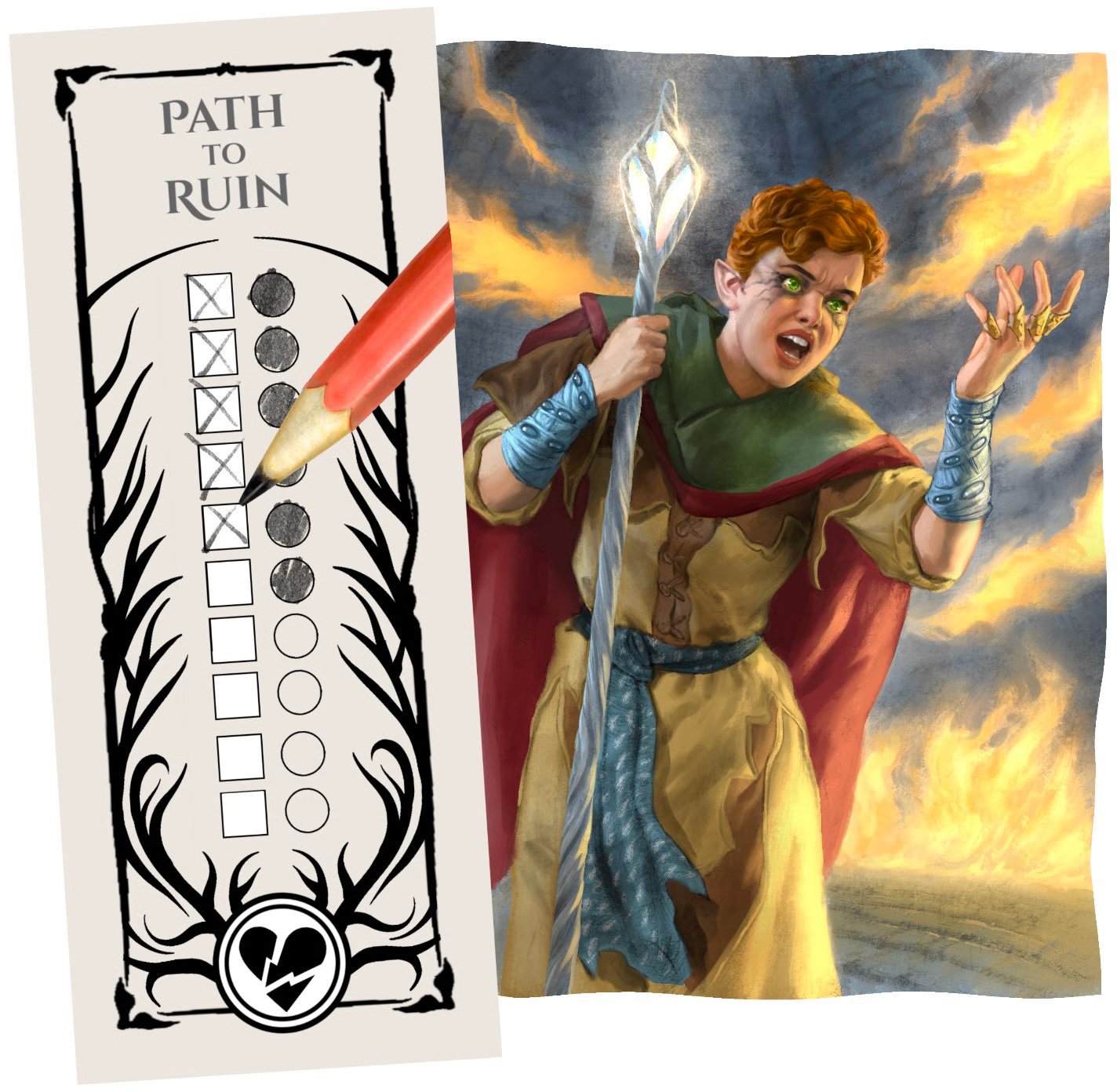
 Inner Fire
Inner Fire
A character’s Inner Fire, represented as squares on their character sheet, is a stacking resource that symbolizes their burning drive to defy the odds and seize hope in dire moments. In gameplay, they allow you to assert limited control over the narrative separate from the dice, turning failed dice into successes, fueling special abilities, and might even allow you to defy death itself. Inner Fire fuels many of the systems in Ley Line, making them one of the most powerful resources at the player’s disposal.
 Twists of Fate
Twists of Fate
Sometimes, the Loremaster will weave a sudden complication into the story known as Twists of Fate. Unlike failing a skill check, these challenges offer a deliberate negative turn in the scene meant to foster entertaining conflict while offering players a chance to gain Inner Fire by embracing the downturn—or to defy it at a cost.
